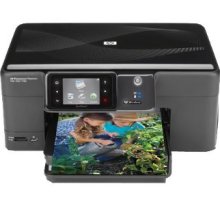 By Jae-Ha Kim
By Jae-Ha Kim
Chicago Sun-Times
April 30, 2003
To print or not to print. That is the question for a lot of digital camera users who’ve stashed hundreds of images and aren’t sure what to do with them.
If you’re like many Americans, you may store them on your computer or a CD. You may even e-mail a few images to your friends and family. But print them out? What a hassle, right?
Not really.
“For the last hundred years, we’ve been used to taking pictures and having them processed at a photo lab,” says Sony spokesperson Jeff Clark. “The average person will shoot a roll of 24 pictures, and get double prints. But how many times have you picked up your pictures to find there are just a handful of good ones?
The rest are just thrown in a shoe box. The beauty of digital photography and printing is you can choose what you want to print.”
Printing a few pictures yourself is convenient, because you can crop and manipulate the image to the size you want. But it also can be expensive. Calculating in the cost of photo paper and the amount of cartridge ink used, it costs between 50 to 75 cents to print out a 4-by-6 inch photo at home.
Even Sony’s Clark suggests, “If you need 35 copies of a print for everyone at work, you’re much better off taking it down to a photo finishing house. It’ll be cheaper in the long run.”
As a general rule, if you’ve got the digitized equivalent of a roll of photos to print, it’s more economical to have them processed at a lab–and you don’t even have to leave your home. It’s as simple as uploading images from the camera to a computer, signing up online at any number of online processing centers, and filling your virtual shopping cart with the images you’d like printed.
You control the number of prints and the photo size.
If your computer is particularly slow at uploading, most services offer the option of printing from your memory card or a CD. Since memory cards are expensive, it’s not a good idea to send them via regular mail.
But if you have access to a CD burner, copy your jpegs on a CD and mail it. The CD (or memory card) will be returned to you with the prints.
I had great luck with www.photoworks.com. The price is 29 cents for a 4-by-6 print, a good deal since shipping and handling is a flat $1.95. I got photos back just four days after placing my order.
But if you like the do-it-yourself approach, having a photo printer can be a fun asset.
The demand for digital cameras over the last couple years has been enormous, says David Heim, deputy editor of Consumer Reports magazine. And the industry has taken notice. The mantra for digital cameras, printers and computers over the past few years has been, Make it simple.
Many photo printers these days come pre-equipped with memory-card readers that make it a no brainer to upload or print images directly from a memory card. I used my Fuji camera’s SmartMedia card to make prints on both the HP Photosmart 7550 ($299) and the Lexmark Z65P ($129.99), which I got on sale for under $90 after factoring in the $20 manufacturer’s rebate. The color on the Lexmark prints wasn’t quite as vivid as the HP prints, but both printers processed gorgeous photos quickly and efficiently. You also have the option of producing borderless prints on the HP, which isn’t available on the Lexmark printers.
If you’re already happy with your regular printer at home and are looking for something small and efficient specifically for photo printing, Sony’s DPP-EX7 digital photo printer ($450) is worth checking out. Instead of using ink, it utilizes dye sublimation (dye sub) technology. It doesn’t print anything larger than 4-by-6 inch photos, but gives you the option of making stickers as well as oddly-shaped 3.5-by-4 inch photos.
“Our prints are supercoated and finger-resistant, so you don’t have to worry if you spill something on them,” says Sony’s Clark. “You just wipe them away and there’s no stain.”
The prints were indeed water-resistant and the quality of the prints was comparable to the HP Photosmart.
The printer’s pro also is its con. The photo paper and printing ribbon come bundled together, making it convenient in having exactly the right amount of ribbon for the packet of paper. The con appears if you start a print and then cancel the job: You end up with more ribbon than photo paper. It’s a waste to throw it out, but there’s really no other option since you can’t buy just the paper.
A packet that includes 25 4-by-6 inch sheets of photo paper and color printing ribbon costs about $17.
Regardless of which printer you choose for yourself, Consumer Reports’ Heim suggests these tips for all potential buyers:
–Check out the cost of replacement cartridges. A cheap photo printer may not be such a great bargain if the ink cartridges are outrageously priced.
–Use the same brand of cartridge and ink as your printer. Consumers Reports’ tests show that prints from matching systems fade the least. Lexmark, which doesn’t offer its own brand of photo paper, recommends Kodak paper.
–Give ink jet prints 24 hours to dry before framing them or archiving them in a photo album.
***
Sidebar:
BY THE NUMBERS Lexmark Z65P, $129.99. Black Ink Cartridge, $ 29.99; color print cartridge, $34.99 to $43.99.
Sony DPP-EX7 digital photo printer, $450. 4×6 prints w/color dye sub ribbon, for 25 prints, $17.
HP Photosmart 7550, $299. 4×6 prints, for 20 prints, $9.99. HP black inkjet print cartridge, $19.99; HP photo inkjet print cartridge, $24.99; HP tri-color inkjet print cartridge, $34.99.